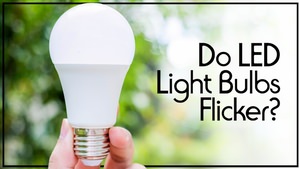An estimated 80% of the population experiences some type of light sensitivity. What causes this prevalent issue, and how does it appear?

While light sensitivity doesn’t sound all that complicated based off its name, not many are aware of all it entails. Continue reading on as we take a closer look.
What Is Light Sensitivity?
Light sensitivity, also known as Photophobia, refers to pain or discomfort caused by viewing lights. The word Photophobia directly translates to “fear of light”. And while that sounds like something a vampire would suffer from, it’s not used to describe any sort of irrational fear. Instead, it simply means your eyes are hypersensitive to brighter light.
What are the effects of Light Sensitivity?
In addition to general eye pain and irritation, there are a plethora of other side effects that can accompany light sensitivity. A few of these include dizziness, nausea, blurred vision, migraines, and in some cases, even swelling of the eyes.
Probably a good thing I stopped there. Otherwise, it would’ve sounded like a medication commercial.
Squinting
Another one of the more recognizable symptoms is eye squinting. Those suffering from light sensitivity often resort to prolonged squinting, as they attempt to shield their eyes. This can quickly result in headaches and pain in the facial muscles.
What Should Light-Sensitive people avoid?
Well, probably light, for starters.
In all seriousness, light sensitivity can be triggered by many different sources, and by a wide range of brightness levels. This of course varies, depending on the individual experiencing it. Here are some of the main culprits we can point to.
Fluorescents
Fluorescent lights are an extremely efficient way to light up any room, and they’re found almost everywhere. That being said, they’re also known to produce a flicker that isn’t usually visible to us. It’s this invisible flicker that can cause additional irritation for those dealing with photophobia.
Blue Light
Blue light has been found to give the human eye a harder time compared to other colors on the visible light spectrum. This is no exception for those suffering from light sensitivity. Luckily, there are many bulbs that possess a warmer tone, and produce a significantly less amount of blue light
If you’re still curious about blue light, we explore the topic a bit more thoroughly in one of our other blogs -Everything You Need to Know About Blue Light.
What Causes Sensitivity to Light?
Being a problem that so many people suffer from, it’s no surprise that the root causes of photophobia are vast. There’s an extensive list of injuries, conditions, and even some medications that can lead to Photophobia. While all of those won’t be mentioned here, here’s a quick list of the most common causes:
- Concussions
- Pink eye
- Allergies
- Improper use or care of contact lenses
- Migraines
- Cataracts

How Does Light Cause Pain?
Hope you enjoy small science lessons, cause I’m not giving you much of an option here. ;)
Why light is able to give us such sharp pain is still unknown to modern scientists. In recent years however, we’ve discovered which part of the eye is most likely responsible for transmitting these signals to the brain.
Photoreceptors are found at the back of the human eye (also known as the retina). These lengthy-named neurons are responsible for turning light into electrical signals, so they can later be translated by the brain. The first two photoreceptors consist of rods and cones. These are what grant us our ability to process images and colors, such as this beautiful little screen you’re staring at.
What we’ll be looking at is the third type of photoreceptor, ipRGCs. Like most sciencey things, this has another, much longer name. ipRGCs is actually an acronym for “intrinsically photosensitive retinal ganglion cells”. Not only do these cells manage things such as sleep cycles and melatonin levels, but they have also recently been linked to the pain caused by photophobia.
Solutions for Light Sensitivity
Having touched on this a bit briefly already, there are a couple simple ways to combat Light Sensitivity harmful effects. Aside from warmer toned lights, tinted glasses are another great way to avoid the harmful effects of photophobia. These range from everyday sunglasses to blue light-blocking glasses. There are even a few brands of glasses specifically intended to aid those suffering from light sensitivity.
Hey, if you’re having to deal with eye pain, you might as well look darn good while doing it.
That being said, if you’re dealing with intense photophobia, the best thing you can do is schedule a visit with a medical professional. And remember, reading blogs is fun, but it should never be a replacement for seeing your optometrist. :)






